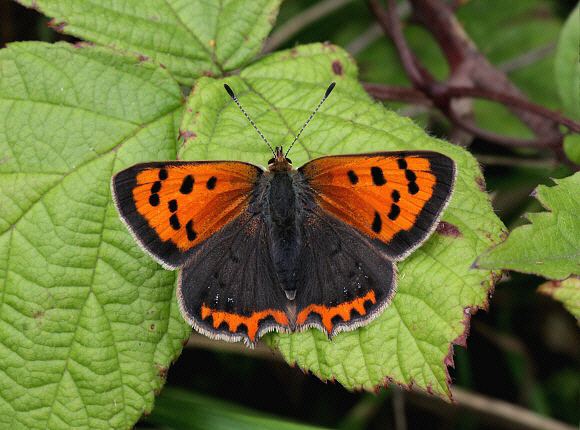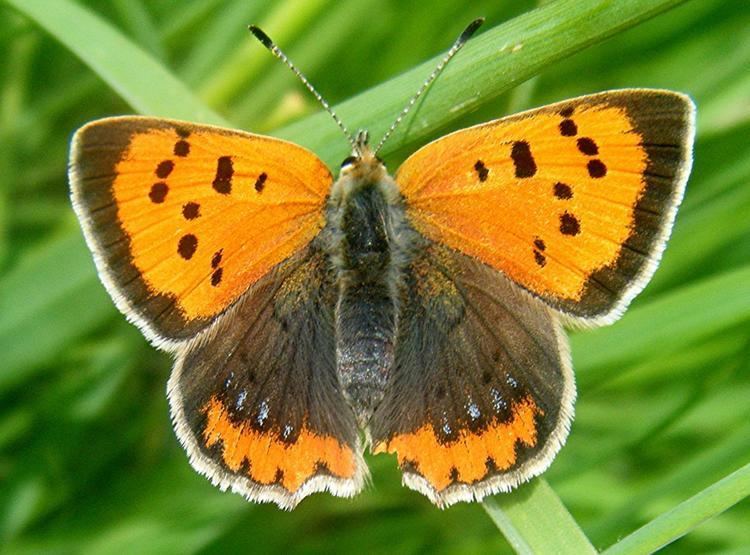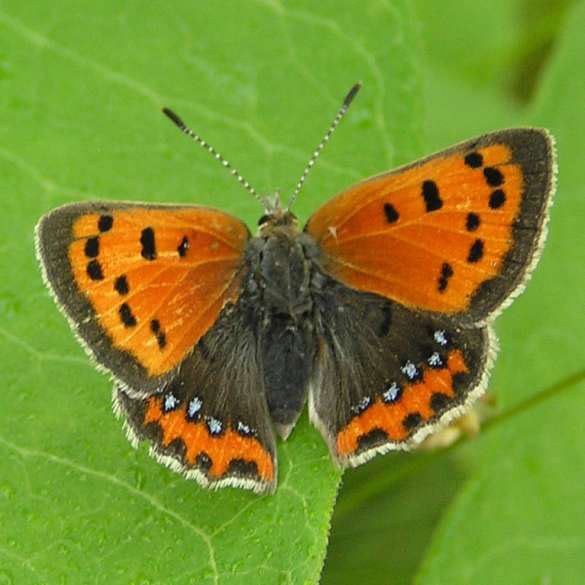Higher classification Lycaena | Scientific name Lycaena phlaeas Rank Species | |
 | ||
Similar Lycaena, Butterfly, Holly blue, Common blue, Meadow brown | ||
Small copper butterflies lycaena phlaeas
Lycaena phlaeas, the small copper, American copper, or common copper, is a butterfly of the Lycaenids or gossamer-winged butterfly family. According to Guppy and Shepard (2001), its specific name phlaeas is said to be derived either from the Greek phlego, "to burn up" or from the Latin floreo, "to flourish".
Contents
- Small copper butterflies lycaena phlaeas
- Small copper butterflies lycaena phlaeas part 2
- Description
- Range
- Habitat
- Habits
- Life cycle
- Host plants
- Systematics
- References

Small copper butterflies lycaena phlaeas part 2
Description

The upperside forewings are a bright orange with a dark outside edge border and with eight or nine black spots. The hindwings are dark with an orange border. Some females also have a row of blue spots inside the orange border and are known as form caeruleopunctata. The undersides are patterned in a similar way but are paler. The black spots on the forewings are outlined in yellow and the dark colouring is replaced by a pale brownish grey. The hindwings are the same brown/grey colour with small black dots and a narrow orange border. The caterpillars (larvae) are usually green, but some have a purple stripe down the middle of the back and along each side.
Range
It is widespread and common across Europe, Asia, and North America, and also found in North Africa south through to Ethiopia.

It can be found almost anywhere in south/central England and Wales although never, it seems, in large numbers. Its distribution becomes more patchy in northern England, Scotland and Ireland.
Habitat
It is found in a wide variety range of habitats from chalk downlands, heathland, woodland clearings to churchyards and waste ground in cities.
Habits
In bright sun it is a very active little butterfly with the males setting up small territories which they will defend vigorously against rival males or indeed any unlucky passing insect. Even the shadow of a large bird passing overhead is enough to elicit a response. Females are pursued and mating usually occurs in vegetation.
Life cycle
The eggs are laid singly and conspicuously on the upperside of food plant leaves and the young caterpillar feeds on the underside of the leaf creating "windows" by leaving the upper epidermis of the leaf untouched. Pupation takes place in the leaf litter and the pupa is thought to be tended by ants. There are between two and three broods a year, fewer further north. In exceptionally good years, a fourth brood sometimes occurs in the south and adults can still be seen flying into November. The species overwinters as a caterpillar.
Host plants
Depending on the habitat, common sorrel (Rumex acetosa) and sheep's sorrel (Rumex acetosella) are the two main food plants, although other docks (Rumex species) are occasionally used.
Systematics
Lycaena phlaeas belongs to the subgenus Thersamolycaena of the genus Lycaena. The species is in turn divided into several subspecies:
